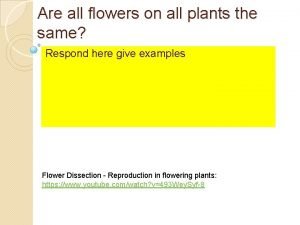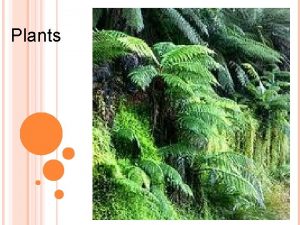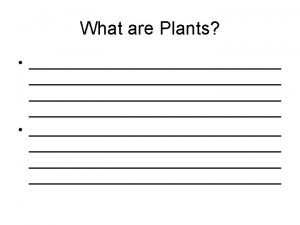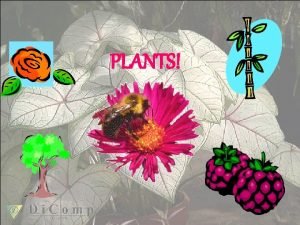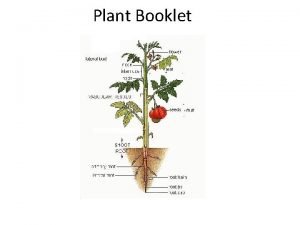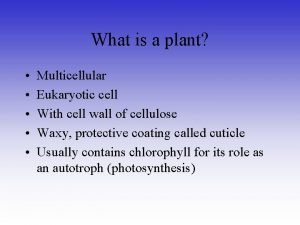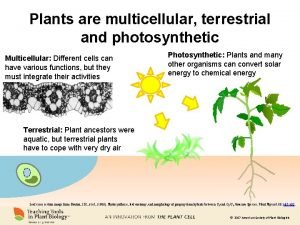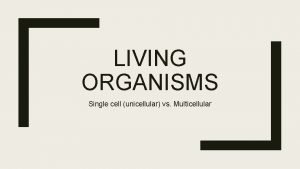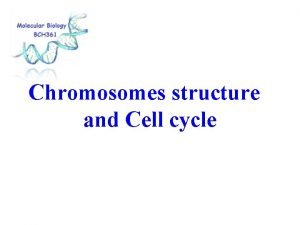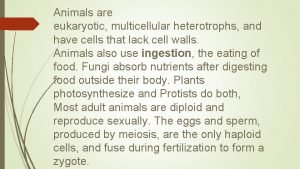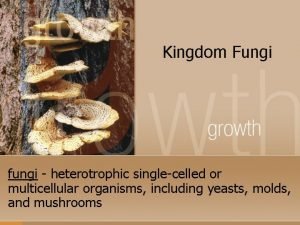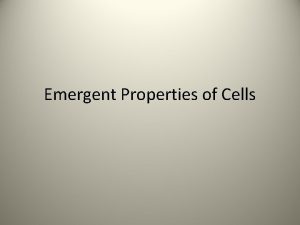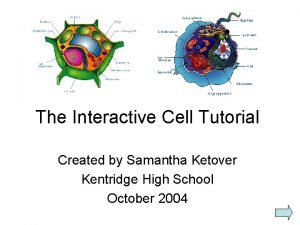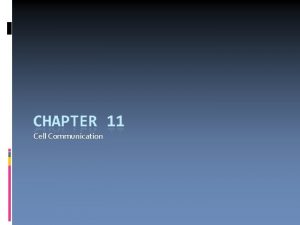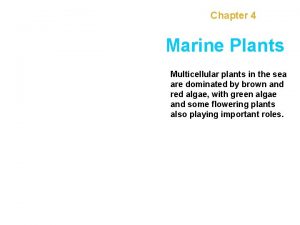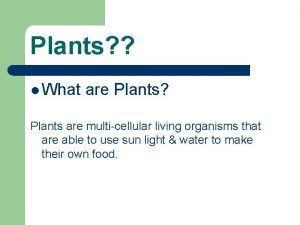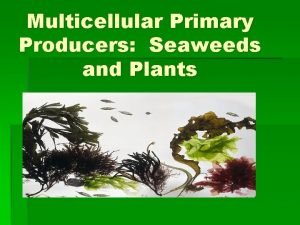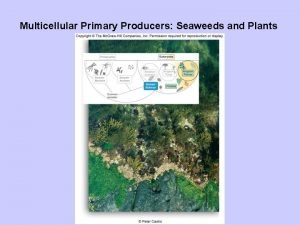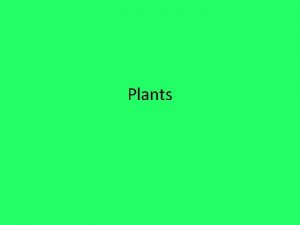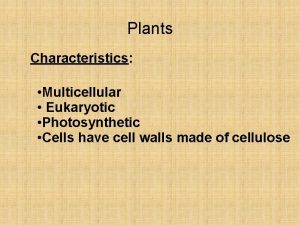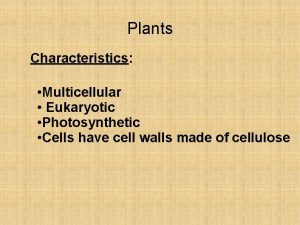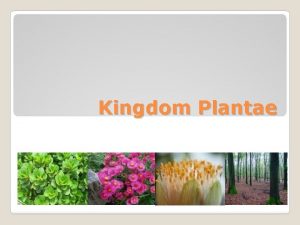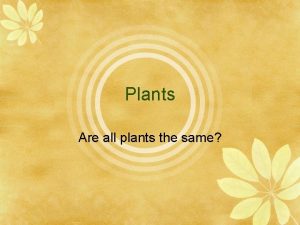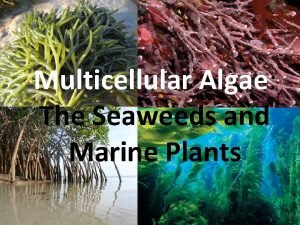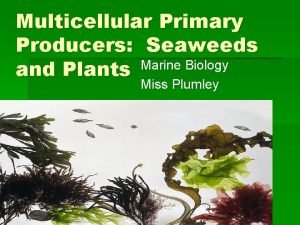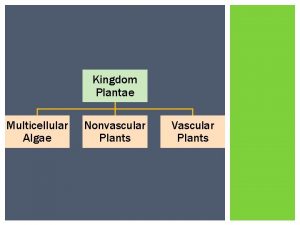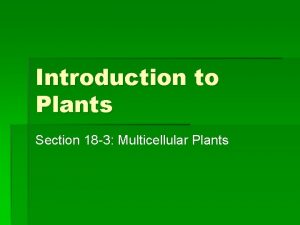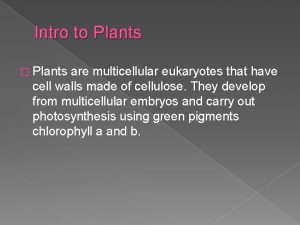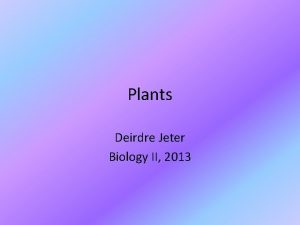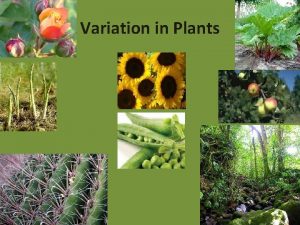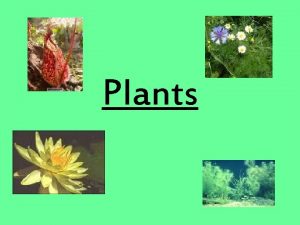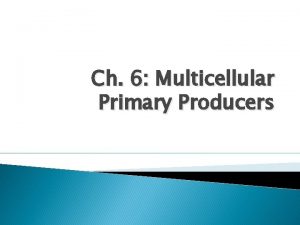Marine Plants All plants are multicellular have cell

























- Slides: 25

Marine Plants • All plants are multicellular, have cell walls and chloroplasts (which contain the green pigment, chlorophyll) • All plants make their own food (glucose) by photosynthesis

PLANTS VASCULAR ROOTS - absorb nutrients/water - anchors plant STEMS - carry nutrients to the leaves - carry food to the roots NON-VASCULAR LEAVES - photosynthesis *includes flowering plants, pine-bearing plants and ferns *includes algae, moss and liverworts

Marine Plants are divided into: 1. Chlorophyta: includes green algae (ex. spongeweed, sea lettuce) 2. Rhodophyta: includes red algae (ex. Irish moss, Nori) 3. Phaeophyta: includes brown algae (ex. Rochweed, kelp) 4. Anthophyta: includes all flowering marine plants (including marine grasses)

Each group differs in: 1. Photosynthetic pigments (other than chlorophyll) 2. Morphology (structure) 3. Habitats 4. Reproductive strategies

Algae Blade: flattened, broad leaf-like part of plant; photosynthetic Stipe: flexible, stem-like part of plant that helps to absorb “shock” of wave action *While some species (particularly brown algae) have specialized conducting tissue, it lacks xylem and phloem. Holdfast: root-like structure whose only function is to hold the plant to substrate; the holdfast does not absorb water or nutrients (as the roots do)

Reproduction in Algae meiosis Diploid (2 n) Sporophyte Haploid (n) spores

Green Algae (Chlorophyta) • One of the largest groups of algae • Found in fresh and marine water, both benthic and planktonic • May be unicellular, colonial or multicellular, flagellated or not

Sea Lettuce (Ulva): large blade

Spongeweed (Codium): UNICELLULAR, but macroscopic and multinucleated

Enteromorpha: tubular, grows attached to substrates in intertidal zone

Caulerpa: grows by rhizome-like structure

Halimeda: flattened, calcified (calcium) blades (tropical)

Acetabularia: looks like small umbrellas (one celled, about 8 cm long)

Brown Algae (Phaeophyta) • Have brown to olive green color due to presence of both chlorophyll (green pigment) and xanthophyll (yellow pigment) • Brown algae form independent habitats for marine life (ex. Kelp forest, Sargassum mats) • Many have “air bladders” to help algae float toward surface (and light!) • Algin extracted from brown algae is useful in making various products such as toothpaste, paint, shaving cream, soaps.

Macrocystis: giant kelp (Pacific) large corrugated blade with serrated edges and a single elongated air bladder at the base of each blade. Found in low intertidal areas. Grows up to 20 meters in length and sometimes forms large underwater kelp forests.

Laminaria: Northeast kelp (grows to about 3 ft. )

Fucus: rockweed, grows attached to rocks

Sargassum: floats in large mats in tropical ocean

Sargassum – have gas-filled balls that keep the seaweed afloat

Postelsia: (sea palms)

Red Algae (Rhodophyta) • Most commercially valuable group of algae • Contain red pigment, phycoerythin, which “hides” chlorophyll color • Most abundant in shallow waters (due to low availability of red light at deeper depths) **some species, however can survive at depth • Some species have calcium carbonate in cell walls (makes them hard, brittle)

Porphyra (aka “nori): cultivated in Japan, China and Korea for food

Chondrus (aka “Irish Moss”): harvested in US for carageenan and agar (gelling agents) used in ice cream, pudding and jello

Corallina: branching red algae found on rocks (contains calcium carbonate)

• Continue with marine plants
 Mikael ferm
Mikael ferm Distinct characteristics of plantae
Distinct characteristics of plantae What determines climate
What determines climate Plants are multicellular eukaryotes
Plants are multicellular eukaryotes Parts of a male flower
Parts of a male flower Which part of the plant carries and protects the seed
Which part of the plant carries and protects the seed Are plants multicellular
Are plants multicellular Plants are multicellular eukaryotes
Plants are multicellular eukaryotes Multicellular plant
Multicellular plant Plant tissue
Plant tissue Plants are multicellular eukaryotes
Plants are multicellular eukaryotes Photosynthetic
Photosynthetic Unicellular vs multicellular activity
Unicellular vs multicellular activity Is a nerve cell multicellular or unicellular
Is a nerve cell multicellular or unicellular Cell division in multicellular organisms
Cell division in multicellular organisms Name
Name All animals are multicellular heterotrophs
All animals are multicellular heterotrophs Yeasts are single celled heterotrophs
Yeasts are single celled heterotrophs Emergent properties of multicellular organisms
Emergent properties of multicellular organisms 12 edges 6 faces
12 edges 6 faces Nonvascular plant
Nonvascular plant Nonvascular plant diagram
Nonvascular plant diagram Flowering and non flowering plants similarities
Flowering and non flowering plants similarities C3 plants vs c4 plants
C3 plants vs c4 plants Samantha ketover
Samantha ketover Cell city analogy project
Cell city analogy project




